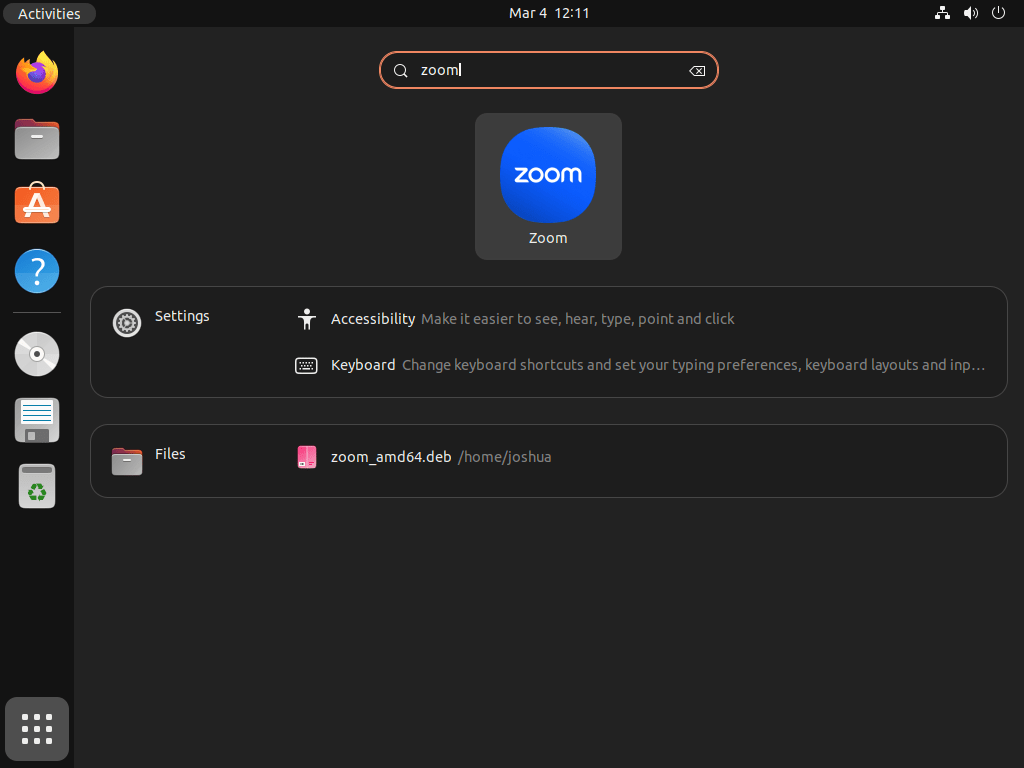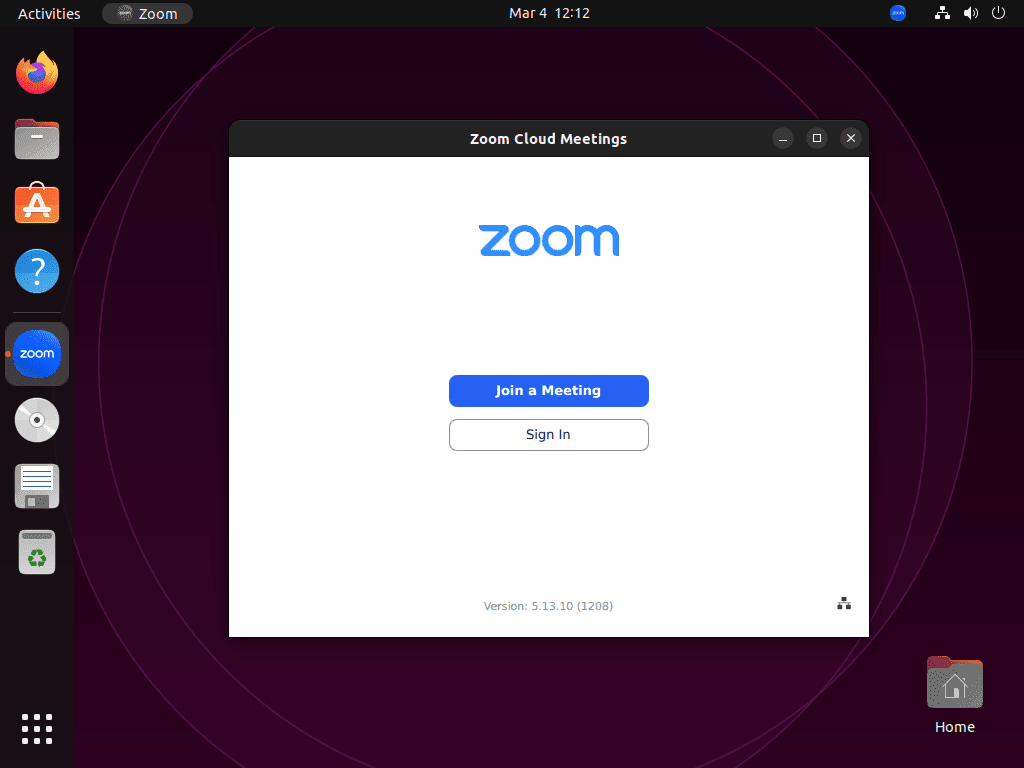Zoom is a widely-used video conferencing tool that enables virtual meetings, webinars, and collaboration across various platforms. It offers features such as HD video and audio, screen sharing, virtual backgrounds, and breakout rooms, making it a popular choice for both professional and personal use. For Ubuntu users, Zoom can be installed using several methods, each offering different levels of flexibility and ease of use.
On Ubuntu 24.04, 22.04, or 20.04, you can install Zoom via three primary methods: using the .deb package manually downloaded and installed via dpkg, through the Snap package with Snapcraft, or via Flatpak with Flathub. Each method provides access to the latest Zoom features, and this guide will walk you through all three installation processes to help you choose the one that best fits your needs.
Method 1: Install Zoom via .deb DPKG
Update Ubuntu Before Zoom Installation
To ensure a smooth installation of Zoom on Ubuntu, it’s essential to update your system first. This will help avoid conflicts and ensure that your system is up-to-date. To update Ubuntu, open the terminal and enter the following command:
sudo apt update && sudo apt upgradeThis command updates the package list and installs available updates. The system may prompt you to enter your password to initiate the update process. After completing the update, proceed with the Zoom installation.
Download Zoom .deb Package
Using the .deb package method, you can download the official Debian-based package from the Zoom website to install the Zoom client on Ubuntu. By default, Zoom is not available in the default Ubuntu repository.
To download the package, open the terminal and enter the following command:
wget https://zoom.us/client/latest/zoom_amd64.debThis will download the latest version of the Zoom package to your system.
Install Zoom on Ubuntu via DPKG Command
Once the download is complete, you can install the package using the following command:
sudo dpkg -i zoom_amd64.debThis command will install the Zoom client on your system, allowing you to use it for video conferencing and collaboration.
Method 2: Install Zoom via Snap
Another method to install the Zoom client on Ubuntu is using Snapcraft, a package manager that comes pre-installed on most Ubuntu desktops. This method is usually faster and more straightforward than installing Zoom using a .deb package.
Install Snapd for Zoom
Before starting, verify Snapcraft installation on your system by executing the command below:
sudo apt install snapdInstall Zoom via Snap Command
Installing Zoom with Snapcraft is easy; run the following command to install the Zoom client on your desktop:
sudo snap install zoom-clientMethod 3: Install Zoom via Flatpak and Flathub
The last method we will examine is learning to install Zoom via Flatpak. Flatpak is an integral component in the Linux toolkit for those new to Ubuntu or Linux in general, and it is celebrated for its impeccable sandboxing feature. This mechanism creates a secure harbor for applications, mitigating risks and providing a stable operational environment.
Alongside, Flathub is the trusted repository for housing Flatpak applications. Envision it as a digital toolbox, with Zoom as one of its essential instruments.
Note: If Flatpak isn’t part of your system yet, installing it before proceeding is crucial. For a thorough walkthrough on Flatpak installation on Ubuntu, refer to our dedicated installing Flatpak guide.
Ensure Flathub Activation for Zoom Installation
The Zoom installation begins with integrating the Flathub repository into your system. This move ensures that you have unobstructed access to Zoom and various other Flatpak applications.
Input the following command into your terminal:
sudo flatpak remote-add --if-not-exists flathub https://flathub.org/repo/flathub.flatpakrepoWhen this command is executed, the Flathub repository becomes part of your existing Flatpak framework, opening doors to Zoom and many other applications.
Install Zoom via Flatpak Command
With the Flathub repository now at your fingertips, you are ready to proceed with the installation of Zoom. Utilize the flatpak install command to set the wheels in motion. For Zoom, the command is:
flatpak install flathub us.zoom.Zoom -yInitiating this command pulls Zoom from the Flathub repository and installs it efficiently onto your system.
Launch Zoom via CLI Commands or GUI Path
CLI Commands to Launch Zoom UI
If you installed Zoom via the terminal and you are still in it, you can launch the Zoom client immediately with the corresponding command that matches your installation package manager:
DPKG Launch Command:
zoomSnap Launch Command:
snap run zoomFlatpak Launch Command:
flatpak run us.zoom.ZoomGUI Location Path to Launch Zoom Application
While this method might be impractical, use the following desktop path to open Zoom:
Activities > Show Applications > Zoom

Additional Commands with Zoom
Update Zoom
DPKG Method to Update Zoom
To update Zoom, go to the Zoom website and download the latest .deb package for Ubuntu, or re-use the following command:
wget https://zoom.us/client/latest/zoom_amd64.debThen, run the following command to update Zoom:
sudo apt install ./zoom_amd64.debSnap Method to Update Zoom
If you installed Zoom using Snapcraft, you could update it using the following command in the terminal:
sudo snap refresh zoom-clientFlatpak Method to Update Zoom
If you installed Zoom with Flatpak initially, run the following command to check all Flatpak installations for updates comprehensively:
flatpak updateRemove Zoom
If you no longer need Zoom on your Ubuntu system, you can easily remove it using the following commands in the terminal:
APT Method to Remove Zoom
sudo apt remove zoomSnap Method to Remove Zoom
sudo snap remove zoom-clientFlatpak Method to Remove Zoom
flatpak uninstall us.zoom.ZoomConclusion
With Zoom installed on your Ubuntu system using one of these methods, you can easily join and host meetings, collaborate with colleagues, and stay connected with friends and family. Whether you prefer the traditional .deb package installation, the simplicity of Snap, or the flexibility of Flatpak, each method ensures you have access to the latest Zoom features and updates. Regularly updating your Zoom installation will keep you equipped with the newest enhancements and security fixes, ensuring a smooth and secure video conferencing experience on Ubuntu.


I installed zoom from the Debian package, and it crashed.
I then installed the Snap package, and it said there was an update.
The link took me to the Zoom site, where I could download the Debian package.
I re-installed from the Debian package, and Zoom worked.